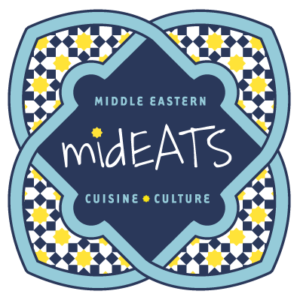What inspired you to start this website, and how’d you come up with the name?
A friend and I kept stumbling upon one anothers blogs, as we both were the only Egyptian American food blogs back in 2008/2009. We both shared our cooking philosophies and scrumptious Egyptian-inspired recipes. We combined our talents between 2011-2017 and midEATS became a lil phenomena among Middle Eastern food bloggers. While my partner went her own way in 2017, we continue the tradition of sharing Middle Eastern food and resources in this space. Oh, and the name midEATS was of, well, the obvious play on the word “Middle East,” and “MidEast” – see, we manage to find food/“eats” in everything! It’s a (healthy) obsession! 😉
(2) Are these recipes your own? Where did you get them from?
Recipes evolve over time, and many of the recipes on our website are based on traditional Middle Eastern dishes. For example, neither of us actually created “kibbeh”; nor would we ever we claim that we did. Sometimes, we present our own version of the dish, or some traditional rendition that was passed down. Knowing Middle Eastern culture though, and how Middle Eastern women work in the kitchen, there’s never a strictly traditional version, and the number of variations are nearly infinite. When we want to get really traditional, we try to distill the recipe to its simplest version and point out a few common variations. At the same time, some things about our cooking styles are truly unique. Before we feature a traditional dish, we extensively research recipes that are either in print and online (and the most important part of this research often includes phone calls to our mothers, sisters, aunts, and grandmothers). We then sit down and draft our own before we hit the burner. So that was a long winded way of saying, YES! These are our recipes and our own renditions of traditional favorites!
(3) What are your food and cooking philosophies?
The best meals are only possible with the best ingredients. We believe in real food – not food products, and not items pretending to be food. We like the real thing and we shy away from artificial preservatives, additives, and prefer whole grains and wholesome products. In our cooking, we strive to use the best and most authentic ingredients we can find, though that is not always easy if we’re trying to emulate the certain traditional Middle Eastern dishes. We always look for ways to tweak traditional recipes to incorporate healthy ingredients. Does that mean we shun kunafa (or knafeh) because it’s made with white flour? Hardly! We believe in enjoying traditional foods in moderation, and working on ways to make them healthier.
(4) Did you take those awesome pictures?
Yes, however, we’re in the process of learning how to use our DSLRs, so please bear with us while we experiment with the angles, light, colors, and layouts of our pictures. Our purpose in sharing food pictures with you is threefold: to instruct on how the final product and the steps to get there. Also, we ain’t tryin to hide it – we are not food photographers. We are home cooks, with full time jobs in other careers, but we are working to teach you practical steps on how to prepare a home cooked meal. All of that is to say, our pictures may not be Instagram worthy!
(5) Who designed your logo?
We owe our awesome logo to Sean Swanson, who tirelessly worked on it to achieve our vision of incorporating tasteful Moroccan tile design. We highly recommend Sean’s work!
(6) Can I copy your recipe or your picture?
The whole reason we set up this website is for you to gain inspiration in the kitchen, and to share our our recipes and traditions with you. While we cannot control what happens on the worldwide web, we ask that you cite our recipes when discussing them or modifying them. Please use common blogger courtesy. We have grand dreams of publishing a book, and once that happens, we will have copyright protection over that. As for the pictures, we also kindly ask that you link back to midEATS when linking any pictures from our blog, FB page or Instagram to your post, and don’t attempt to sell the pictures or any product that features them for profit. Shukran for being considerate in advance!
(7) Where do you buy your food and other ingredients? What about those strange ingredients, such as pomegranate molasses and cardamom extract?
For the most part, specialty ingredients are easily found in Middle Eastern, and sometimes Indian grocery stores. Every now and then, the Middle Eastern section of large grocery stores, such as Whole Foods, will carry some of these special ingredients. Furthermore, Amazon carries a wide variety of products, but just as midEATS has high standards, be sure you purchase only those with high star ratings. A great cumin will make your dish taste so much better – and will produce a more nutritious meal – than a low quality one.
